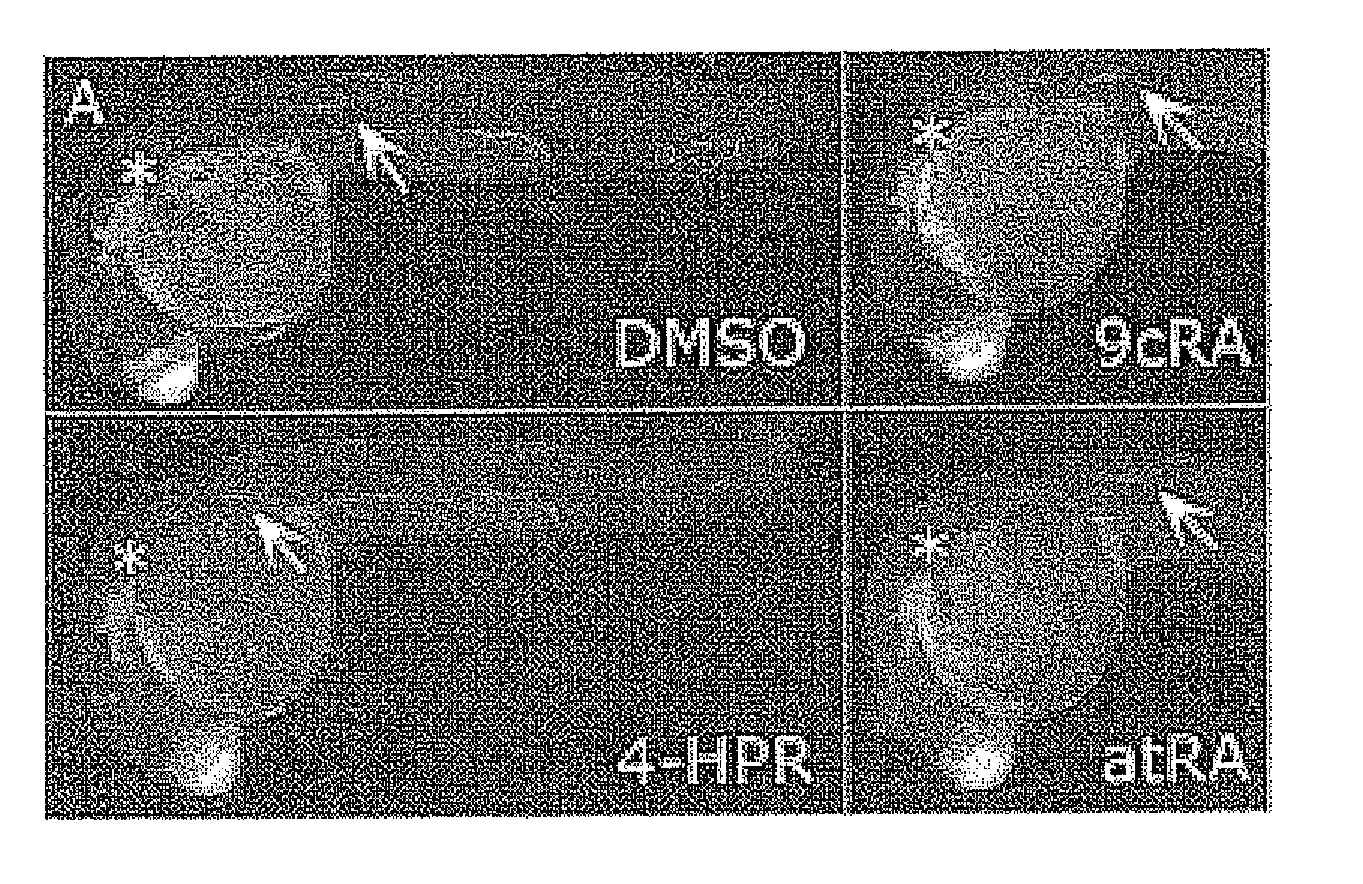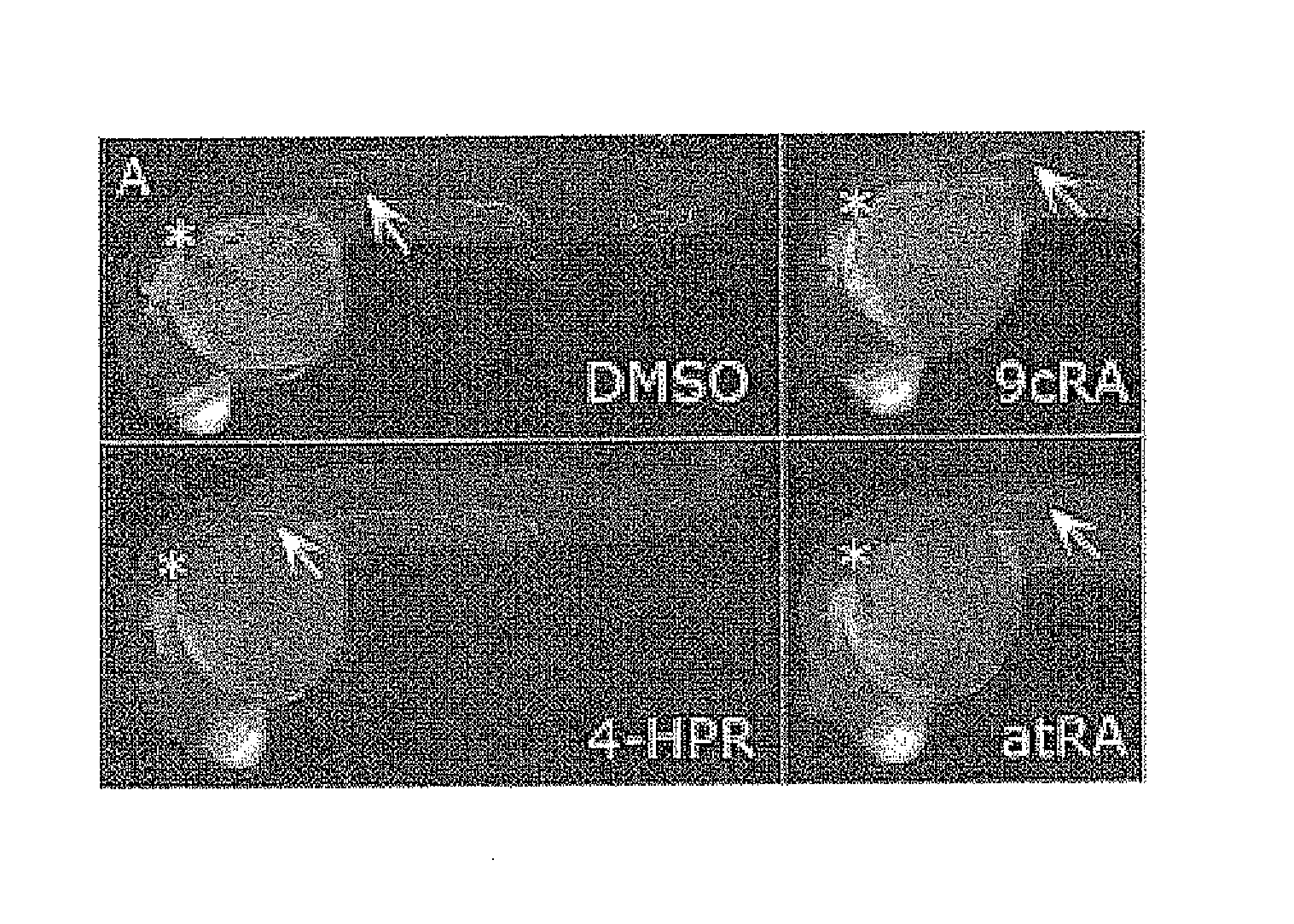Biological method for in vivo tracking of molecules affecting cellular migration
- Summary
- Abstract
- Description
- Claims
- Application Information
AI Technical Summary
Benefits of technology
Problems solved by technology
Method used
Image
Examples
example 1
[0042]The basic experimental conditions used in the three migration test experiments are:
[0043]Zebra fish (Danio rerio) are used, kept in a 14 / 10-hour light / darkness cycle. Embryos are recovered after natural fish mating and they grow in Petri plates at 28° C. in E3 medium (5 mM NaCl, 0.17 mM KCl, 0.33 mM CaCl2, 0.33 mM MgSO4, and 0.1% Methylene Blue) until the reach the development stadium suitable for the test, which is determined according to Kimmel et al., (1995). The larval stadiums are designated in post fertilization hours (hpf) or post fertilization days (dpf).
[0044]In this first example, in each cup on a plate with 24 cups with 2 ml of E3 medium each, we placed from 3-10 transgenic embryos that express the GFP gene under the control of the CldnB promoter (CldnB::GFP; kindly donated by Dr. Darren Gilmour (EMBL, Heidelberg, Germany). The agents subjected to tests (N˜(4˜hydroxyphenyl)retinamide (Fenretinide, 4-HPR), retinaldehide 9-cis, retinaldehide all-trans and only with th...
example 2
[0045]In this example we pretend to demonstrate how our invention allows extrapolation of the results with zebra fish to superior vertebrates, human beings among them. As we already mentioned, several among the molecules that guide the lateral line primordium migration, as well as the metastatic cells', are common to humans and zebra fish (for example, cxcr4, sdf1, tacstd). Even more important, the migration process is very similar, because in both systems the directed migration depends on the PI3K enzyme (Dumstrei et al., 2004), there is a cytoskeleton rearrangement and the formation of fitopodia and lamelopodia, etc. On the basis of this information, we present below examples that allow us to validate and extrapolate the lateral line system to study and find new immunosuppressant molecules capable of inhibiting cellular migration.
[0046]Dendritic cells, when entering the maturation process, start to express chemokine receptors (CCR7, CXCR4) that direct their migration towards the s...
example 3
[0048]In order to confirm that the LLP system is useful to detect molecules that inhibit cellular migration, embryos were incubated as described in the preceding examples, but this time in the presence of prostaglandins PGD2 and 15-deoxy-PJE2, known because they inhibit migration through CXCR4 in human dendritic cells (Nencioni et al. 2002) and PGE2, which increments the expression of CXCR4 in dendritic cells (Scandelia et al. 2002). Embryos in the 22 hpf stadium were incubated between 26 and 28° C., in the absence or presence of either PGD2 or 15-deoxy-PJE2, permitting the development of embryos up to the 36 hpf stadium, at which time we checked the primordium advance both in the treated embryos and in the (untreated) control embryos. Both in the control embryos and in the fish incubated with PGE2, the neuromasts were dyed with DiAsp and we observed that the LLP primordium migrated normally. The embryos treated both with 10 μM PGD2 and 5 μM of 15-deoxy-JE2 were negative for DiAsp a...
PUM
| Property | Measurement | Unit |
|---|---|---|
| Temperature | aaaaa | aaaaa |
| Temperature | aaaaa | aaaaa |
| Time | aaaaa | aaaaa |
Abstract
Description
Claims
Application Information
 Login to View More
Login to View More - R&D
- Intellectual Property
- Life Sciences
- Materials
- Tech Scout
- Unparalleled Data Quality
- Higher Quality Content
- 60% Fewer Hallucinations
Browse by: Latest US Patents, China's latest patents, Technical Efficacy Thesaurus, Application Domain, Technology Topic, Popular Technical Reports.
© 2025 PatSnap. All rights reserved.Legal|Privacy policy|Modern Slavery Act Transparency Statement|Sitemap|About US| Contact US: help@patsnap.com


